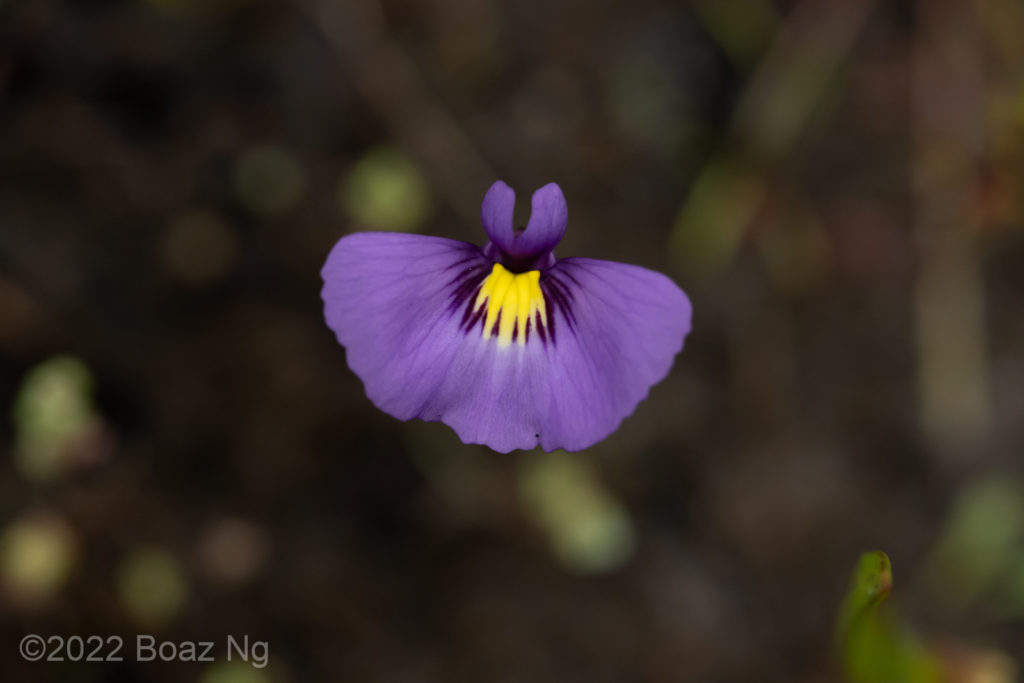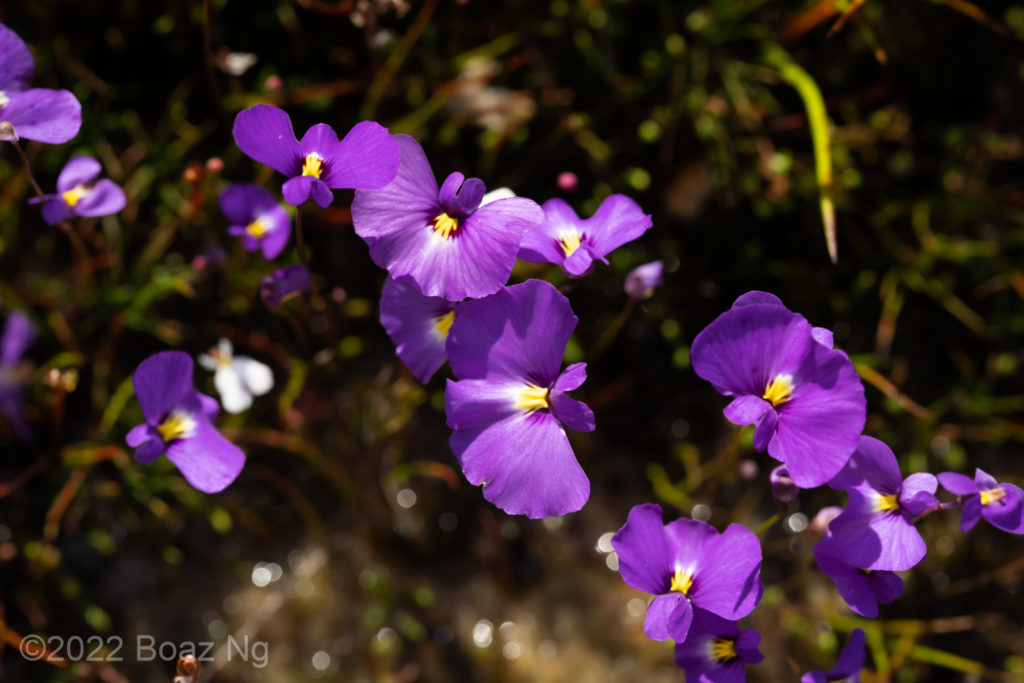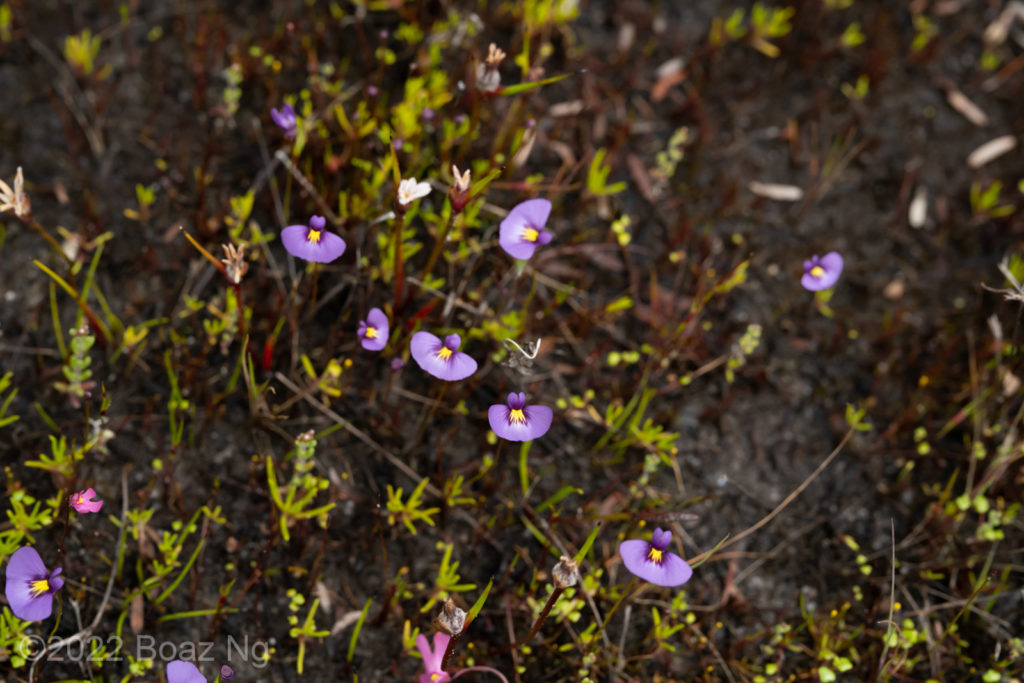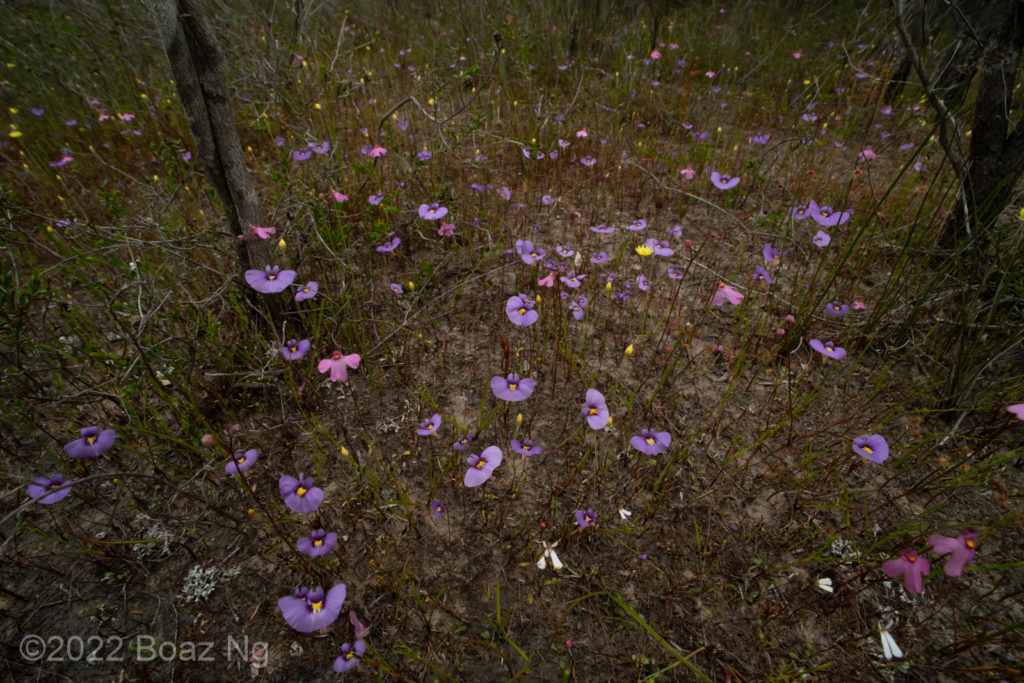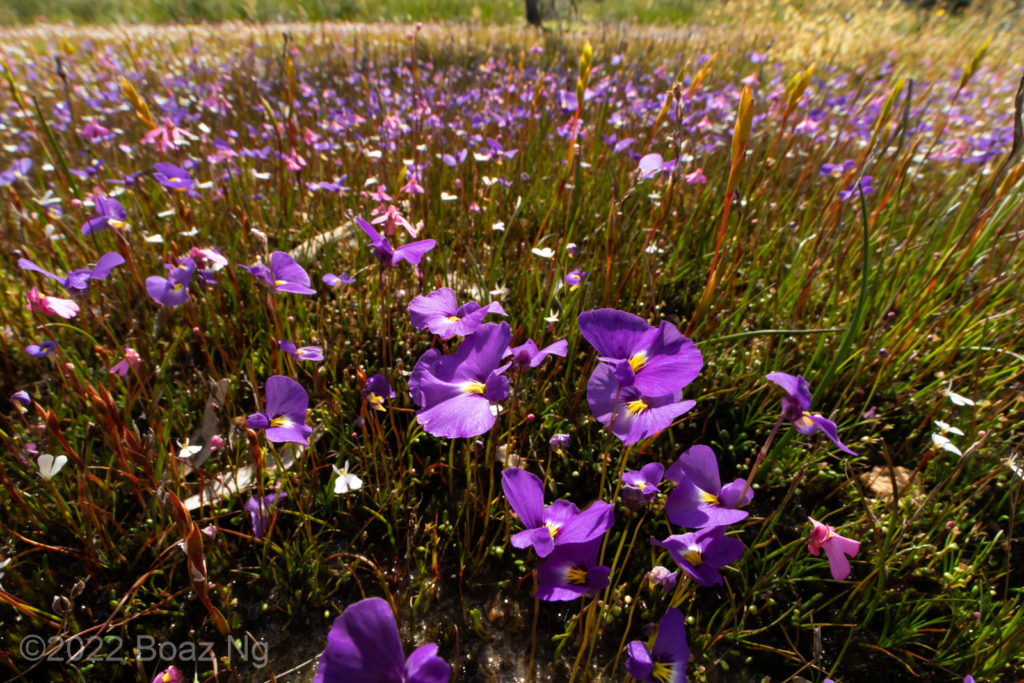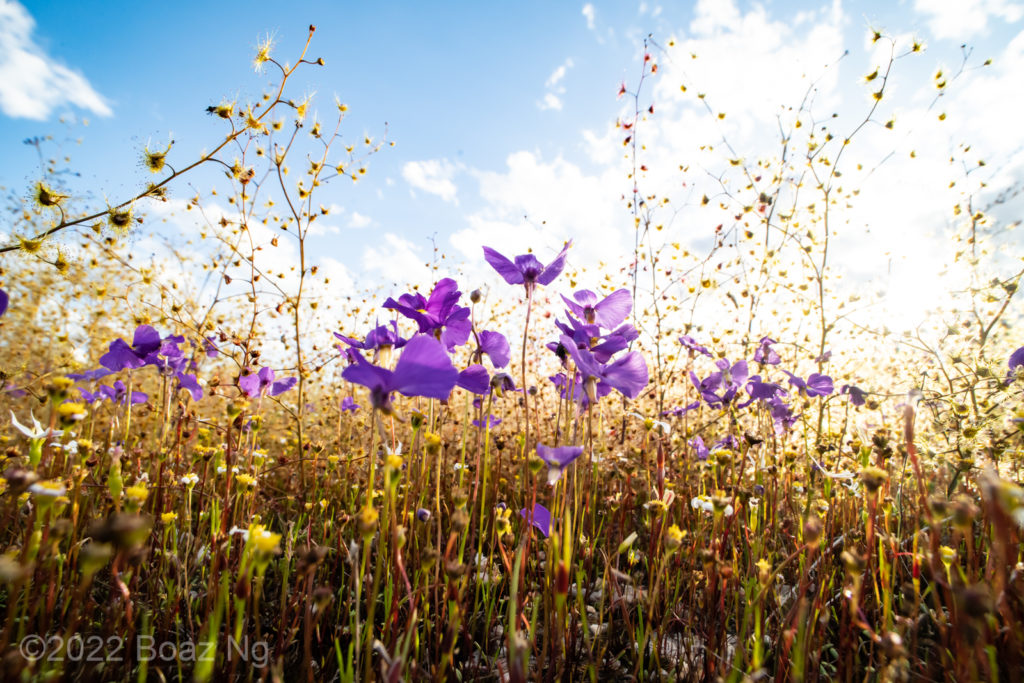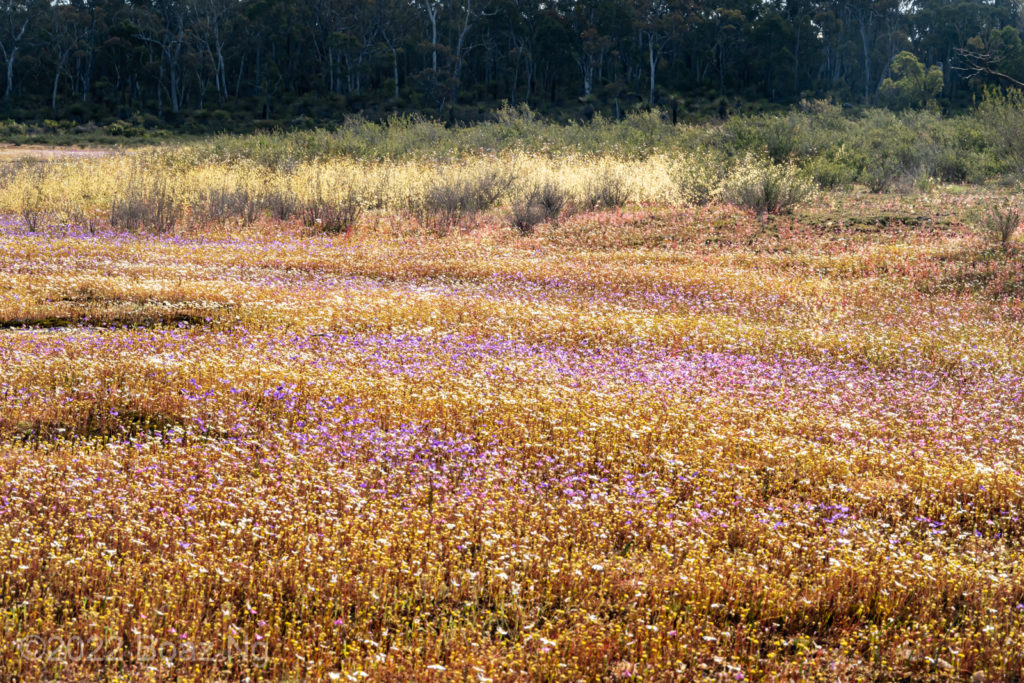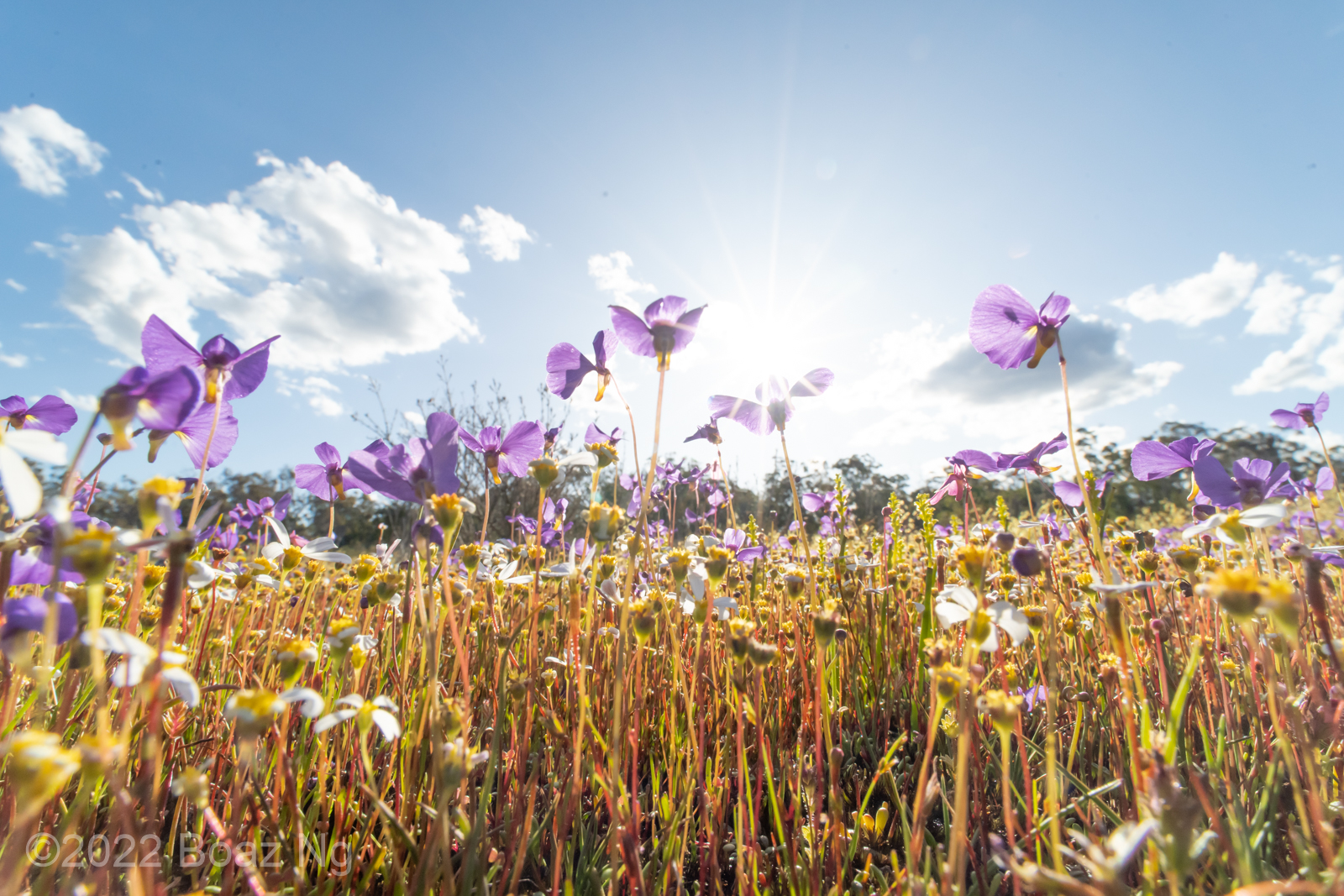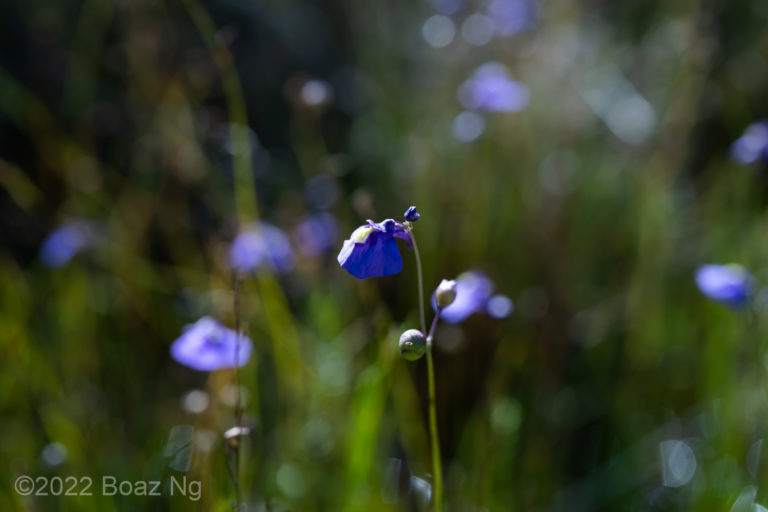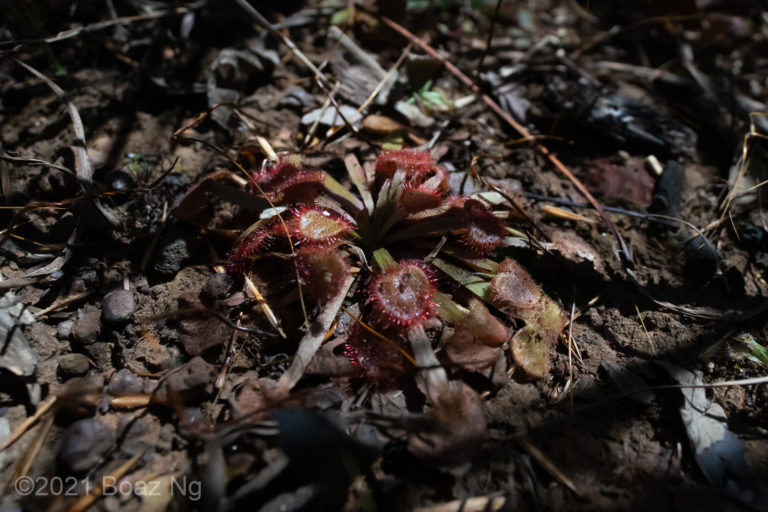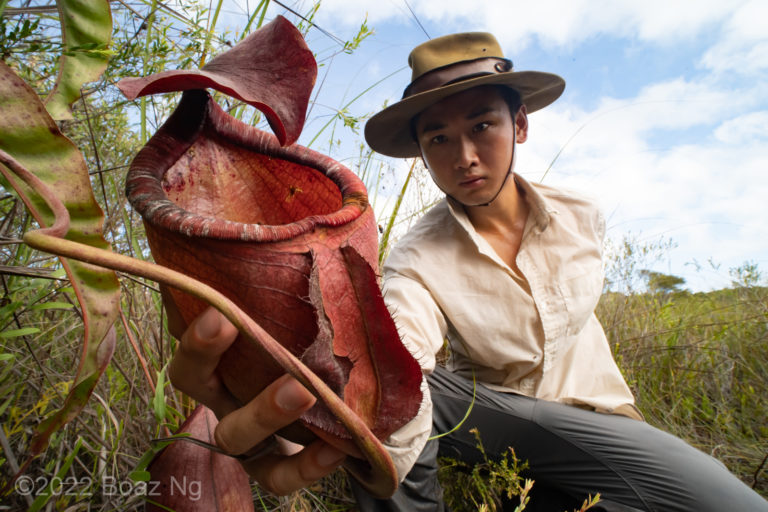Utricularia petertaylorii is a terrestrial bladderwort endemic to south-west Western Australia. The species is named after Peter Taylor, a well regarded authority of Utricularia.
Utricularia petertaylorii has a purple flower that grows around 2 cm in width. The lower corolla lip is semi-circular in shape and sometimes ruffled, especially in larger specimens. The palate region has many shallow yellow ridges that are generally flanked by purple striations to the side and sometimes with a white blotch near the middle. The upper corolla lip has two lobes that are separated by a deep notch. The spur is broad at the base, before constricting towards a rounded end.
The species is mainly known in the Perth Hills, with a patchy distribution extending south towards Manjimup and east to Lake Muir. It is most commonly observed in silty/clayey substrates that accumulate in the flats of creek systems. It also grows on moss pads and skeletal substrates atop flatter granite outcrops. These locations are wet in winter but dry out by summer. Flowering occurs in spring as the weather warms up and the substrate dries out.
Utricularia petertaylorii is closely related to U. inaequalis and U. violacea, sharing a similar floral morphology. Utricularia petertaylorii is distinguished by U. inaequalis by its semicircular lower corolla lip when viewed from above (that of U. inaequalis is triangular in shape). Utricularia petertaylorii is mainly known in the Darling Scarp, while U. inaequalis occurs in swamps on the Swan Coastal Plain. Utricularia petertaylorii is distinguished from U. violacea by its larger size, with blooms that are typically greater than 1cm in size (U. violacea is commonly around 0.5 cm in size), as well as its entire lower corolla lip (the lower corolla lip of U. violacea is usually, but not always divided into 3 shallow lobes).
